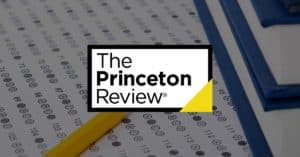There are many benefits to e-learning – or online learning – compared to classroom teaching, and one article can not do justice to all of them. That’s why I decided to pick out the most important advantages of e-learning that sets it apart from other learning methods.
The following are what I consider the ten most important advantages of e-learning:
Advantages of E-Learning
1. E-learning is self-paced
Students who study online can plan their own time schedule, without having to make personal sacrifices in order to meet the class attendance requirements of teachers and traditional universities. Research has demonstrated that self-paced learning leads to increased student satisfaction and reduced stress, resulting in improved learning outcomes. Some of the advantages of self-paced learning include efficiency, effectiveness, convenience, scalability, and reusability.
2. E-learning is student-centered
Student-centered learning (SCL), also referred to as learner-centered education, is a modern approach to learning that aims to put the students in the center of focus rather than the teachers. Student-centered learning tends to go hand in hand with e-learning with relatively easy implementation of tools such as student discussion boards and peer grading systems.
In fact, many of the ten types of e-learning largely revolve around the idea of student-centeredness. Both collaborative e-learning and synchronous online learning promote student-to-student interaction. Being able to plan and design fully student-centered online learning environments is one of the greatest advantages that e-learning has. The value of student-centeredness must not be understated.
3. E-Learning is cost-effective
Due to simplified logistics and lowered travel costs, among other factors, learning institutions that utilize e-learning can expect to save 50% to 70% on overall training costs. How, exactly?
Let’s bring some real-life examples of e-learning to the table.
The University of North Carolina in Charlotte (UNC) is an excellent example of how turning to online learning can promote cost efficiency. UNC claims that it managed to save $5,000,000 in 2010 by focusing on e-learning rather than traditional classroom-based learning. Additionally, they saw an increased number of total students in their faculties. These savings came from the simple fact that they did not have to make investments in physical premises to facilitate learning. Virtual classrooms have no need for physical lecture halls, which tend to get very costly.
Another example of advantageous cost efficiency in e-learning is Wisconsin-Madison University, which saved US$172,000 solely due to savings in professors’ time. E-learning reduced the amount of overall time professors had to spend on learning sessions, and this time saving led to reduced spending for the university.
For educational institutions, the cost-effectiveness of e-learning can also be advantageous when used together with classroom-based learning. This is known as blended learning, and it’s an excellent alternative for organizations that are not yet ready to fully move over to e-learning.
Cost efficiency in e-learning applies not only to educational institutions but also similarly applies to students. For instance, e-learning reduces the costs associated with commuting, textbooks, and childcare. I will cover some of these points later in this article.
4. E-learning accommodates individual learning styles
E-Learning takes into consideration the differences of individual learners, and it allows students to practice their own individual learning styles. In other words, students are not always required to pass all unwanted courses in a curriculum, and they can choose specific topics of interest to them. All students have different learning styles, and there will never be a one-size-fits-all type of solution that will match all students at once. That is why individualistic learning methods are some of the greatest advantages of e-learning.
For instance, one of the most innovative types of e-learning, adaptive e-learning, has the potential to be the most individualistic learning method ever made if implemented correctly. To recap, adaptive e-learning materials are designed to automatically change and adapt according to the knowledge, skills, and needs of each individual student.
5. E-learning allows for customized learning environments
Researchers found that employees working in environments without pictures, plants, souvenirs, and other distractions were 15% less productive than those working with said “distractions.” This also applies to the educational context – students who don’t have a desirable learning environment will feel it affects their learning performance and mental health.
This is where the problem arises – in traditional classrooms, the learning environments are predetermined by the educational institutions according to their preferences. In other words, the students rarely have any say in what their learning environment looks like.
On the other hand, in the case of e-learning, the students have total control of their learning environment. Those students who feel the benefits of a plant-filled environment can customize their e-learning environment accordingly. And those students who feel better in a minimalistic learning environment without any distractions can reap the benefits of such an environment when pursuing online courses.
6. E-learning is built for analytics
Data is the new oil, and e-learning makes use of student data much more effectively than other forms of learning. That is because with all students using online systems for their learning, it’s possible to relatively easily measure all their interactions with those systems (with appropriate privacy safeguards, of course). E-learning analytics is the extraction of valuable information from online learning management systems, and it’s another one of the greatest benefits of e-learning.
With student data gained through e-learning analytics, educational institutions can improve their training materials and boost learning outcomes in various ways. For example, if we have data on student dropout rates, we can identify potential pitfalls in our learning materials and eliminate them. Afterward, we can gather new data and analyze whether our change was beneficial to our learning outcomes or not. The potential value of data in education is immense, and its full potential is yet to be realized.
7. E-learning could solve teacher scarcity
In 2019, the Economic Policy Institute (EPI) educational economists wrote in their report that the shortage of experienced teachers is “real, large, growing, and worse than we thought”. Moreover, the Learning Policy Institute (LPI) has also identified the problem of teacher scarcity on numerous occasions, describing it as “one of the most pressing issues facing policymakers”.
The issue of teacher shortage will undoubtedly be difficult to solve, but there are considerable benefits of e-learning in combating teacher scarcity. To clarify, let’s make a comparison. Regular universities have an average of 16.5 students per staff member, while e-learning courses created by one or two qualified and experienced teachers can serve thousands, if not millions, of students. E-learning could potentially reduce the pressure on what is currently a massive 3 million-strong teaching workforce in the US today. Instead of focusing our efforts on recruiting more teachers, perhaps we should instead focus on enabling our highest quality teachers to deliver their materials to a broader range of students through e-learning.
8. E-learning is environmentally friendly
On average, distance learning courses consume 90% less energy and emitted 85% fewer CO2 emissions than traditional university courses. In addition, as e-learning is generally a paperless learning method, it does not contribute to many of the environmental issues associated with paper production. For example, there is no need to cut down trees for paper or to create paper-cellulose production factories, which are known to cause atmospheric pollution in surrounding areas.
9. E-learning reduces the need for textbooks
The total value of the textbook industry is $7-$10 billion, and the average college student spends close to $1,200 per year on textbooks alone. Many students finance their textbook purchases from their student loans, and students who graduate with student loans are known to experience increased stress and depression.
One big advantage of e-learning is that it tends to require fewer or no textbooks from its students. Learning materials can be put online without restriction.
And online learning materials can be reused and updated as needed an unlimited number of times, unlike textbooks which need to be reissued and rebought once again when they become obsolete.
10. E-learning is time-efficient
Online learning cuts the learning time down by 25% to 60% compared to traditional classroom learning. Coupled with the advantages of self-paced e-learning, this results in a highly time-efficient learning solution both for the students and the teachers.
In traditional learning institutions, making changes to school curriculums is a long and complicated process that is often avoided due to its complexity. However, in the case of e-learning, lessons can be delivered and updated more quickly and efficiently – sometimes within days. When used in conjunction with data-oriented e-learning analytics, these changes to the learning materials are not only based on theory but real evidence.


